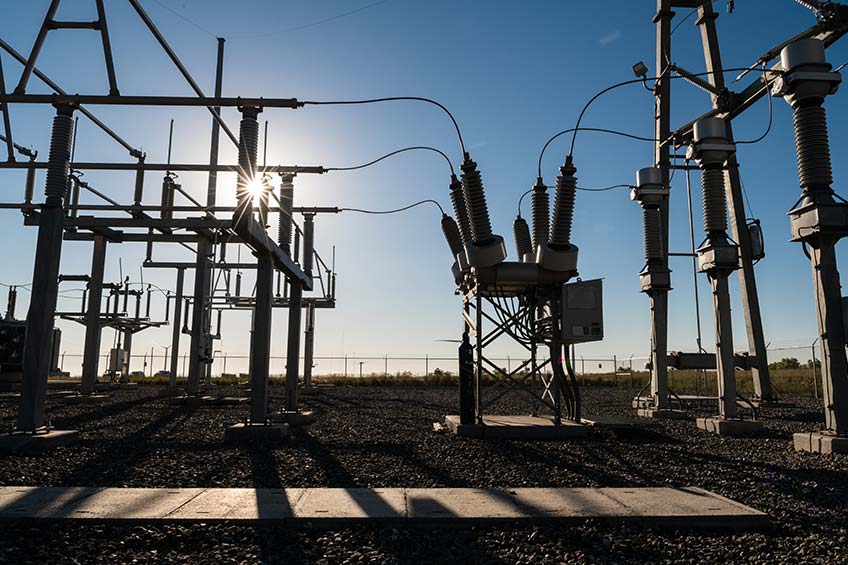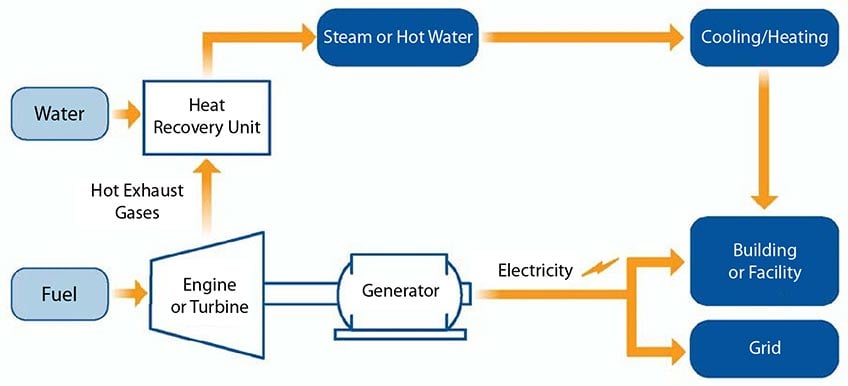Modeling Advanced Combined Heat and Power
NREL leads a multiorganizational analysis of the impacts of advanced, flexible combined heat and power (CHP) on the electric power grid.

NREL explores advanced CHP technologies to improve the performance and reliability of the electric power grid. Photo by Dennis Schroeder, NREL
The U.S. electric grid is evolving in response to technology advancements and increased electricity demands. Advanced systems like flexible CHP are reliable energy sources that can respond to changing requirements.
NREL performed an analysis, with Oak Ridge National Laboratory and other energy industry partners, to determine the potential of flexible CHP in real-world applications, specifically California's electric grid.

Organization of combined heat and power systems. Graphic from Oak Ridge National Laboratory
There are numerous ways CHP supports grid modernization:
- Higher efficiency
- Cost-competitiveness
- Improved waste heat recovery
- Increased reliability and energy security
- Decreased greenhouse gas emissions compared with traditional fossil-fuel power generation
- Eases grid congestion and minimizes transmission and distribution losses.
Flexible CHP systems are an onsite electricity generation resource that efficiently provide both an electrical baseload and surplus. They are designed to support continued operations and provide reliable electricity in the event of a disaster or grid disruption.

Overview of grid and site owner value for traditional, advanced, and combined scenarios. Graphic from Oak Ridge National Laboratory
This multiorganizational effort was part of a bigger project supported by the U.S. Department of Energy's Industrial Efficiency and Industrial Decarbonization Office to further analysis of several clean energy technologies and provide insights on U.S. supply chain constraints.
Learn more about NREL's CHP projects and research.
Impact
Results of this study indicate that advanced CHP can:
- More than double the capacity with a 6-year payback period
- Eliminate grid stress in the California Independent System Operator region
- Be used as a source of reliable reserve capacity
- Reduce electricity imports into California
- Reduce the overall cost of meeting California’s electrical load by approximately 6%, including manufacturing and operating costs.
Technically, NREL overcame high-performance computing issues and incorporated capacity markets into the model to ensure grid reliability and meet demand.
This analysis helps inform decision-makers in charge of budgets for CHP technology research and development, like the California Independent System Operator, and provides information needed to compare potential benefits of CHP to alternative technologies.
Capabilities
NREL tapped its grid modeling and data capabilities to this project.
Power Systems Modeling and Simulation
Using PLEXOS, a power systems modeling tool, NREL modeled three CHP scenarios, including Advanced CHP, Traditional CHP, and a combined scenario, to evaluate how adding CHP at specific sites would impact the grid.
Learn about NREL's power systems modeling capabilities.
Dataset Inventory
NREL's California Low Carbon Grid Study dataset was used for this analysis to model the different CHP scenarios and examine how the California electric grid would function with and without CHP.
Publication
Potential Impact of Flexible CHP on the Future Electric Grid in California, Oak Ridge National Laboratory Technical Report (2020)
Contact
Share
Last Updated Nov. 3, 2025
